
Introduced in 2001 and awarded ‘European Car of the Year’ in 2002, the Peugeot 307 certainly made an impact during its six year production span. After selling more than 314,000 vehicles until it was replaced by the 308 in 2007, the Peugeot has become quite popular in the UK aftermarket scene which makes it a prime candidate for a ‘step by step’ guide.
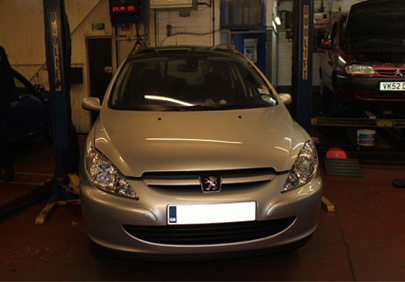
A clutch replacement on the Peugeot can be a little tricky but with the guidance of LuK the whole process will become much easier. Nothing out of the ordinary is needed to complete the job, the only special tools required are a transmission jack, an engine support cradle and a long axle stand. A twopost ramp was used in this example, however a four-post ramp may not provide enough clearance.
For safety reasons its considered best practice to disconnect the battery earth lead before commencing work. If the vehicle has alloy wheels it may be fitted with anti-theft wheel bolts, so make sure you have the key before you start.
Open the bonnet, remove the battery cover and disconnect the battery. Remove the upper air filter housing by releasing the jubilee clip and the four screws (pictured below).
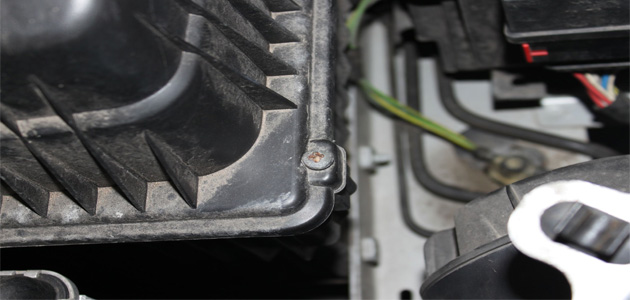
Lift off the upper section and release the lower section by giving it a sharp pull upwards (pictured below).
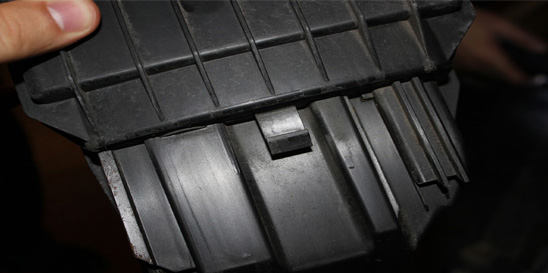
Raise the vehicle and remove both front road wheels. Remove the N/S wheel arch liner to access one of the bolts (pictured below) securing the metal battery tray. Using a relevant tool pull out the plastic clips securing the liner and remove the mud flap (if fitted) then pull out the liner and undo the bolt.
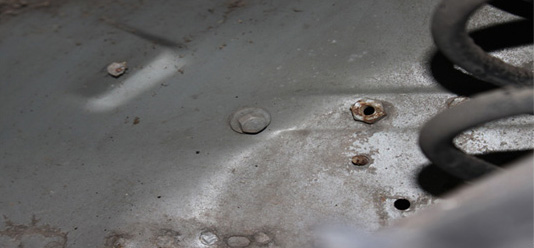
Lower the vehicle and unclip the electrical harness attached to the battery tray. Undo the fixings securing the plastic shield at the back of the tray and lift it out. Undo the remaining bolts and lift the tray out. Disconnect the reverse light switch and the crankshaft electrical connectors. Unbolt the earth point (pictured below) attached to the top of the gearbox and undo the two starter motor allen key bolts and stow it to one side.

Unbolt the slave cylinder and the attached bracket and stow them to one side. Using a relevant tool pop off the ends of the gear selector cables and release the cable supports by pushing the metal fingers (pictured below) in with a small screw driver. Support the engine with a suitable cradle and remove the gearbox mounting bracket by undoing the single nut and the surrounding fixings. Lift out the bush and the support bracket and for extra clearance undo the bracket on top of the gearbox and the gold threaded bolt sticking out of the gearbox. Remove the accessible upper bell housing bolts.
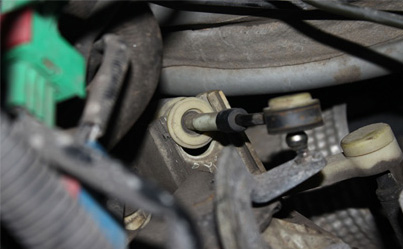
Raise the vehicle and drain the transmission fluid, not forgetting to refit the plug. Remove the “R” clips and the hub nuts on both sides. Split the lower ball joints and swing out the struts to release them, push out the drive shafts from the hubs (these should slide out easily). Slide the nearside driveshaft out from the gearbox. Remove the offside driveshaft by releasing the centre support bearing by removing the two securing bolts (pictured below) then slide the shaft clear of the gearbox.
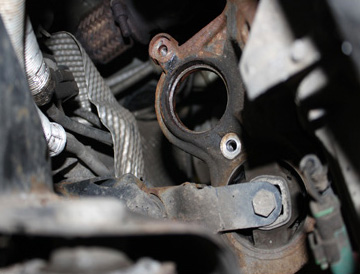
Raise the vehicle and support the gearbox from below using a transmission jack. Remove the remaining lower bell housing bolts and slide the gearbox back slightly and twist it away from the sub-frame exercising care (beware of the radiator coolant pipe). The gearbox can now be lowered.
With the clutch removed, check the flywheel or Dual Mass Flywheel (if it has one fitted) for signs of heat stress and evidence of grease loss. The DMF should also be tested for free play and rock between the primary and secondary masses, LuK tool number 400 0080 10 is specifically designed for this purpose on all LuK manufactured DMF’s. Full instructions and tolerance data for all LuK DMFs are contained on a CD which comes with this special tool.
Clean the first motion shaft splines and any debris from the bell housing (especially important when a release bearing has failed). When comparing the new and old release bearings on this model you may find that they are slightly different. This is perfectly normal if you look at the picture, and the new bearing will work perfectly so don’t worry about fitting it (pictured below).
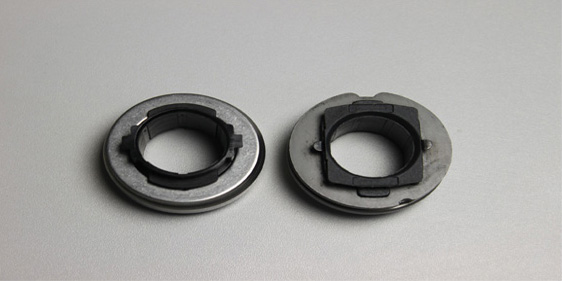
Put a small dab of high melting point grease (not a copper-based product) on the first motion shaft splines and make sure the new driven plate slides freely back and forth. This not only spreads the grease evenly but also makes sure you have the correct kit. Wipe any excess grease off the shaft and driven plate hub. Using a universal alignment tool and checking the driven plate is the correct way round (note “Getriebe Seite” is German for “Gearbox Side”) the clutch can be bolted to the flywheel evenly and sequentially.
Before fitting the gearbox make sure the locating dowels are in place and not damaged. Refit any that have become dislodged and refit the gearbox. Make sure the gearbox bell housing bolts are secured before lowering the jack. Refitting is the reverse of the removal.









